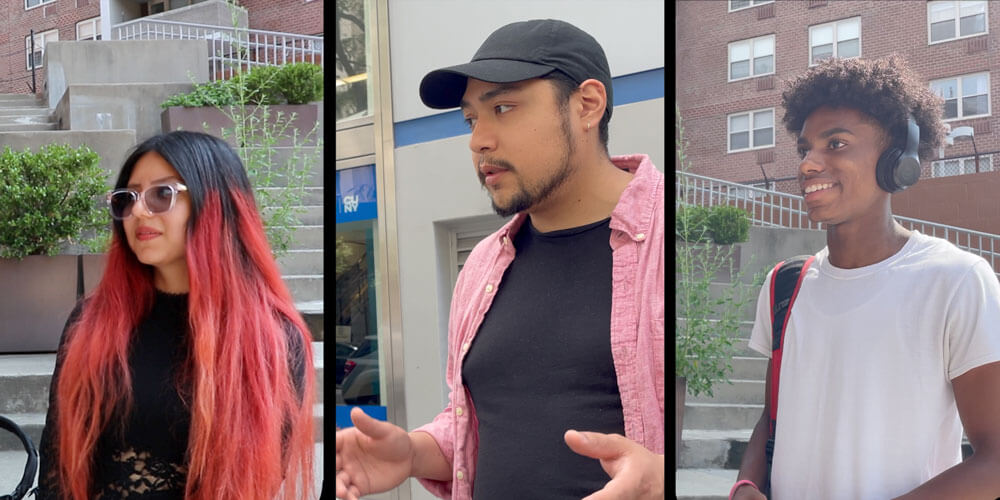It felt like the coldest day in October when I sat in my room staring at one of the most complex higher education forms a 17-year-old like me could possibly encounter. As a high school senior, I thought I knew it all and was ready for college. The five pages with 128 questions in front of me begged to differ. That October day in 2021 was the start of a two-week-long battle to snag a piece of the nearly $30 billion of Pell Grant funding available for that year, my one-way ticket to college. It wasn’t easy, but I never gave up. I know this isn’t the case for everyone, however. About 1.7 million 2021 high school graduates nationwide did not fill out their Free Application for Federal Student Aid (FAFSA)—foregoing $3.75 billion in Pell Grant funding for college—because they didn’t think they would qualify for aid, didn’t think they could afford college, or ran into problems with the application.
Fast forward to 2023. I’m now an intern at CCRC and have had my fair share of experience with the FAFSA. After reflecting on my own experience and briefly interviewing a few students who have struggled with the FAFSA, it’s clear that there are multiple issues that contribute to the anxiety students feel when filling out and submitting the form. Although there has been a movement to simplify the FAFSA—a shorter form is expected to be available later this year—challenges remain. Education Northwest has found that there are several reasons that students don’t complete the form. There is, for example, a lack of resources and help available for students, and there is the complexity of the form itself. The verification process was also a problem for me and the students I spoke with.
Esmerelda, who did not give her last name, is one such student. A freshman at the Borough of Manhattan Community College (BMCC), Esmerelda had recently filed for federal student aid for the first time and said, “It was a really long process.”
For students like Esmerelda, completing the FAFSA can be a long and daunting challenge, especially because obtaining aid is a necessity for students like her to even be able to attend college. Each year tens of thousands of students drop out of the process of applying for aid, which jeopardizes their college enrollment and deters them from completing college. Another first-year BMCC student I spoke with, Sherwood, who did not give his last name, shared his frustration with the rigidness of the form, which didn’t account for his specific financial situation.
“Most people don’t even do their taxes anymore,” he said. “It’s a little scary picking what your closest answer is, and then there’s all these fraud waivers that pop up. It’s like, should I even finish this? Am I gonna mess myself up?”
This anxiety is only heightened when students are chosen for a process called verification. Verification is when a college re-evaluates the financial information that a student and their family provides on the FAFSA to ensure it is accurate. For the approximately four million students who filed a FAFSA and were selected for verification in the 2019-2020 cycle, this process was another barrier potentially preventing them from pursuing their college education. For students like Sophia Loza, a business student at BMCC I interviewed, it meant having to commute to campus on the hottest day of a summer heat wave to prove that she really needs the financial aid she requested, a process she has gone through each semester. It meant having to spend time foraging through documents, including birth certificates, tax papers, and the social security cards of all her dependents. For students like Esmerelda, it meant even more confusion, especially when a student’s parents don’t know English well enough to understand their tax information thoroughly. For me, it meant having to calculate things I never put much thought into, like how much my family spent on toilet paper and other household items every month. Nonetheless, students like me go through this lengthy process in hopes of receiving more aid. The reality is, 84% of verified applications result in either no EFC (expected family contribution) change or a very small change not affecting the total Pell Grant award meaning there’s little reason for increasing rates of verification, especially when this burden falls disproportionately on students who are low-income, underserved, or from first-generation families, students who are typically the least prepared to navigate the financial aid system.
According to Education Northwest, students’ primary sources of information for filling out the FAFSA are their parents, high school counselors and teachers, higher education websites, and other internet sources. When students have parents who did not attend college, their knowledge of the FAFSA is automatically limited. When students attend high schools in low-income communities, the student-to-counselor ratio is likely to be high. At John Bowne High School in Queens, New York, an underfunded high school I attended for four years, the college counselor ratio was approximately one counselor for every 200 students in a graduating class of roughly 800 students. This meant that many students were uninformed and unaware of the importance of FAFSA.
When your parents, like mine, are first-generation immigrants, and your high school lacks the funding to properly help each student, you’re left scrolling endlessly through FAQs on government websites and other forums anxious to find answers to your questions. During moments like these, the FAFSA can feel like an impossible task. Sherwood shared how he wishes there were better hotlines to contact FAFSA representatives, something that could’ve made him feel more confident and prepared to take on the application. This lack of access to information and assistance further deters students from applying to college. Studies have shown that one-on-one assistance is one of the most effective ways to help students navigate financial aid.
To address these challenges, federal policymakers have been trying to simplify the FAFSA. The FAFSA Simplification Act, passed in 2021, will produce several changes in the upcoming 2024-25 application cycle. Changes, like reducing the number of questions on the form from about 108 to roughly 36, have the potential to dramatically improve student filing rates and prevent discouragement. Other changes will improve the IRS Data Retrieval Tool (DRT), so students don’t have to answer all questions manually. This in turn could reduce verification rates because students who cannot access the DRT typically fall into the sorting bin for verification. Additionally, the FAFSA Simplification Act requires the Education Department to simplify the process of verification “to the maximum extent practicable” and to track the verification data of students in hopes of continuously improving the process.
We can only hope that the simplification of the FAFSA can reduce the amount of help students need to complete this essential step in applying to college. In a perfect world, no student will have to sit in their room struggling to understand the complexities of the FAFSA. The FAFSA Simplification Act will hopefully get us one step closer to that world so we can provide financial aid to the students who need it.





